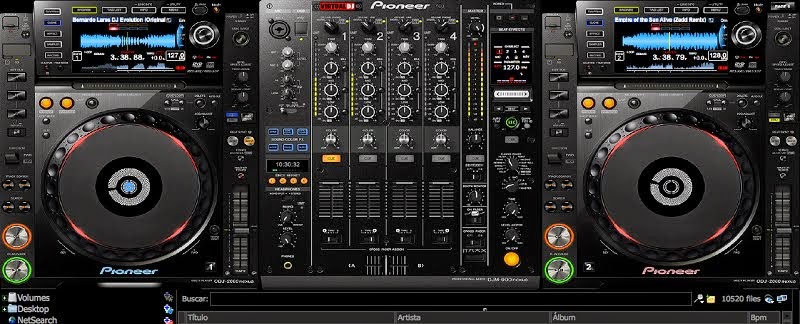

They are built extremely well (although they get rather hot after a few hours of use). By having these in the booth, DJs still using CDs, those who prefer memory sticks/cards and even laptop users can all use the same unit.
PIONEER CDJ 2000 FULL
Beat Count alerts you to the number of beats until a memory cue point and Phase Meter keeps track of bar/beat counts against the master player when syncing.Īt a street price of nearly $2000 / 1899 euros, the CDJ2000 Nexus is definitely more suited to club installs than bedrooms, and it is in the clubs that the full potential of this unit will be realized.
PIONEER CDJ 2000 SOFTWARE
In the same fashion as software such as Mixed In Key, the Traffic Light feature shows the key of a song being played by any connected player in a color-coded fashion. Guaranteed to start a war in the comments section, Pioneer has incorporated a sync button into the Nexus, lining up and beat-matching tracks for you.
PIONEER CDJ 2000 PRO
It would be great if someday a CDJ could analyze CDs on the spot to utilize features like this.Ĭonnecting multiple Nexuses with a LAN cable (CAT5e)-a feature known as Pro DJ Link-unlocks even more functions.

I tested it with backspins and jamming on the hot cues, and it worked without a flaw. When you exit slip mode, the track kicks back in where it would be had you not interrupted playback. Another new feature on the control panel is a slip button, which allows you to pause, scratch, loop, press hot cues and play in reverse without losing your place in the track. Say what you want about "cheating," but I don't know anyone who wouldn't want to set their loops perfectly when it is so easily accomplished. I tested this with some of my worst timing and found it to work consistently. This prevents cue points and loops from being set away from a beat transient. One very welcome addition opened up by rekordbox is the quantize button.

Within minutes, I had a bunch of tracks analyzed, put into a playlist and placed onto a USB stick for playback. Although learning a new program in order to use a CD player seems daunting, the features it makes available are definitely worth the time spent installing and getting up to speed.

It is important to note that in order to use most of these formats to their fullest, your library must be analyzed and organized by Pioneer's own rekordbox software, which is included on a CD-ROM and installed painlessly on my system. Amazingly, wireless streaming from iDevices is possible as well. On the digital front, USB devices, SD cards, data DVDs and computers are all possible formats. Using MIDI, the Nexus can control popular DJ software. Obviously, regular audio CDs are still an option. Part of the appeal of installing a CDJ-2000 Nexus in a booth is that it can handle several formats of playback, thereby accommodating several types of DJ. To the right is a large rotary selector and a back button for browsing menus and selecting tracks. Surrounding the screen are backlit buttons that are used to select which type of media is being used, navigate different menus and get track information. Users can also browse tracks, view detailed track information and even see full-color album art on the large panel. Taking a cue from popular DJ software, it features color-coded waveforms with five levels of zoom. There have been quite a few feature upgrades over the years but no unit has ever been as powerful and versatile as the new flagship CDJ-2000 Nexus.Ī feature that can't be missed on the Nexus is the WQVGA LCD screen measuring at 6.1 inches or 480x234 pixels. "CDJ," technically a Pioneer model number prefix, is now the term used to describe any table-top player and sometimes even the DJs that use them.


 0 kommentar(er)
0 kommentar(er)
